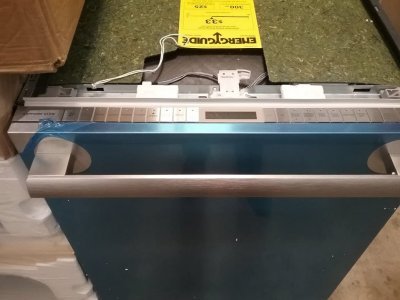Having a dishwasher in your kitchen can be a great convenience, saving you time and effort when it comes to cleaning dishes. However, if you find standing water in your dishwasher after a cycle, it can be frustrating and concerning. In this article, we will explore the common causes of standing water in dishwashers and provide you with effective solutions and preventive measures to tackle this issue.
Table of Contents
Common Causes
- Clogged Drain: One of the most common causes of standing water in a dishwasher is a clogged drain. Over time, food particles, grease, and debris can accumulate in the dishwasher drain, leading to blockages that prevent proper water drainage.
- Faulty Float Switch: The float switch is a small device located in the bottom of the dishwasher that detects the water level. If the float switch becomes stuck or damaged, it may not properly signal the dishwasher to stop filling with water, resulting in an overflow and standing water.
- Malfunctioning Water Inlet Valve: The water inlet valve controls the flow of water into the dishwasher. If it fails to open or close properly, water may not enter or exit the dishwasher correctly, causing standing water at the end of a cycle.
- Improper Loading: The way you load your dishes can also contribute to standing water in the dishwasher. Overloading the dishwasher or placing large items that block the spray arms can disrupt the water flow and prevent effective draining.
Dishwasher Filter
- Clogged Filter: A dishwasher is equipped with a filter to trap food particles and debris. If the filter becomes clogged or dirty, it can impede water drainage, resulting in standing water. Regular cleaning of the filter is essential to prevent this issue.
Prevention and Maintenance
- Regular Cleaning: To prevent standing water in your dishwasher, it is crucial to maintain regular cleaning routines. This includes wiping down the interior, removing food particles from the filter, and clearing any debris from the drain.
- Proper Loading Techniques: When loading your dishwasher, ensure that you follow proper loading techniques. Leave enough space between dishes to allow for proper water circulation, and avoid blocking the spray arms with large or bulky items.
- Clearing the Drain: If you notice standing water in your dishwasher, the first step is to check the drain for any clogs. Remove the dishwasher’s lower rack and inspect the drain area. Clear any visible debris and use a pipe cleaner or a small brush to dislodge any stubborn blockages.
- Checking the Float Switch: Verify if the float switch is working correctly. Gently lift the float assembly to ensure it moves freely. If it appears stuck or damaged, it may need to be repaired or replaced by a professional.
- Replacing the Water Inlet Valve: If the water inlet valve is suspected to be faulty, it is advisable to contact a professional technician to diagnose the issue and replace the valve if necessary.

Professional Help
- Seeking Professional Assistance: If you have tried the above solutions and are still experiencing standing water in your dishwasher, it may be time to seek professional help. A qualified dishwasher repair technician can diagnose and resolve complex issues related to the dishwasher’s internal components.
How often should I clean the dishwasher filter?
It is recommended to clean the dishwasher filter once every month to prevent clogs and ensure proper water drainage.
Can I use vinegar to clean my dishwasher?
Yes, vinegar can be used to clean your dishwasher. Pour a cup of vinegar into a dishwasher-safe bowl or cup and place it on the top rack. Run a hot water cycle to remove any buildup and eliminate odors.
What should I do if the dishwasher continues to have standing water after trying the solutions mentioned?
If the problem persists, it is advisable to contact a professional dishwasher repair technician to diagnose and resolve the issue.
Can improper loading of the dishwasher cause standing water?
Yes, improper loading, such as overloading the dishwasher or blocking the spray arms, can disrupt water flow and result in standing water.
How can I prevent standing water in my dishwasher in the future?
To prevent standing water, maintain regular cleaning routines, follow proper loading techniques, and address any clogs or malfunctions promptly. Additionally, be mindful of the water inlet valve and float switch for any signs of damage or malfunction.
Conclusion
Standing water in a dishwasher can be a frustrating problem, but with proper understanding of the common causes and effective solutions, you can overcome this issue. Remember to regularly clean your dishwasher, follow proper loading techniques, and address any potential blockages or malfunctioning components. By taking these preventive measures and performing routine maintenance, you can ensure your dishwasher operates smoothly, providing you with clean and dry dishes every time.

